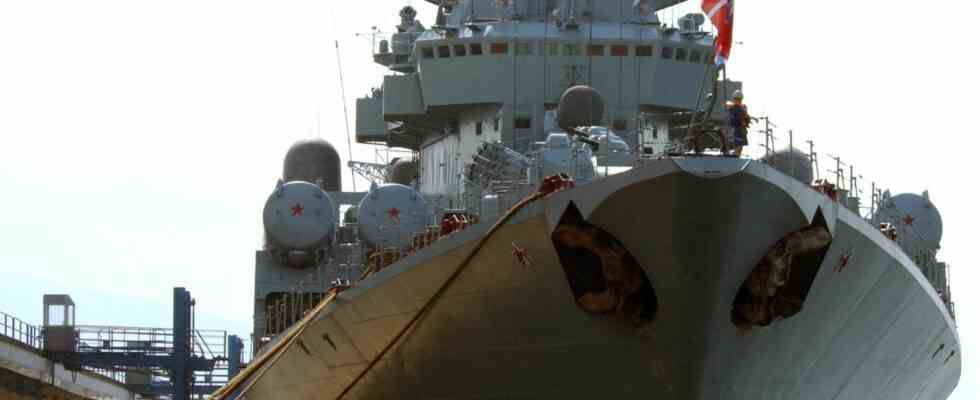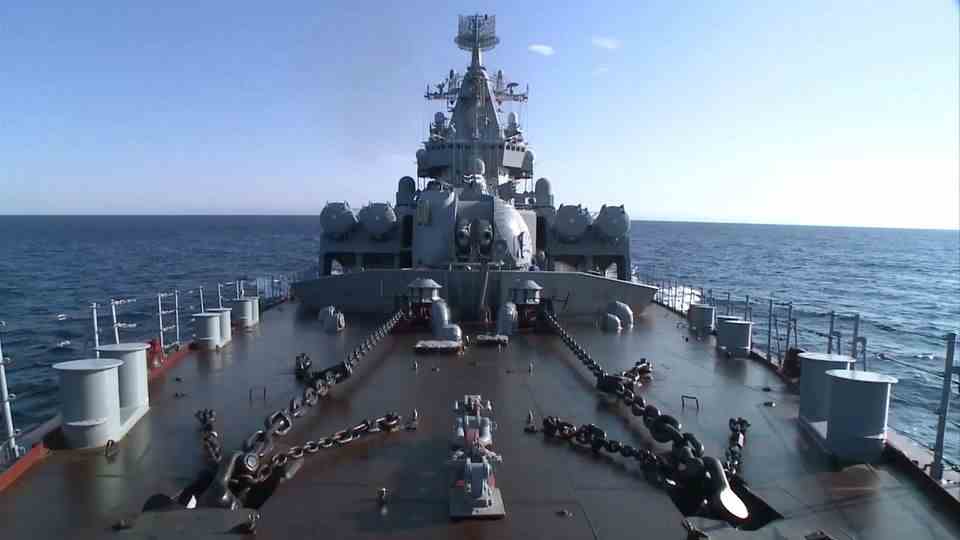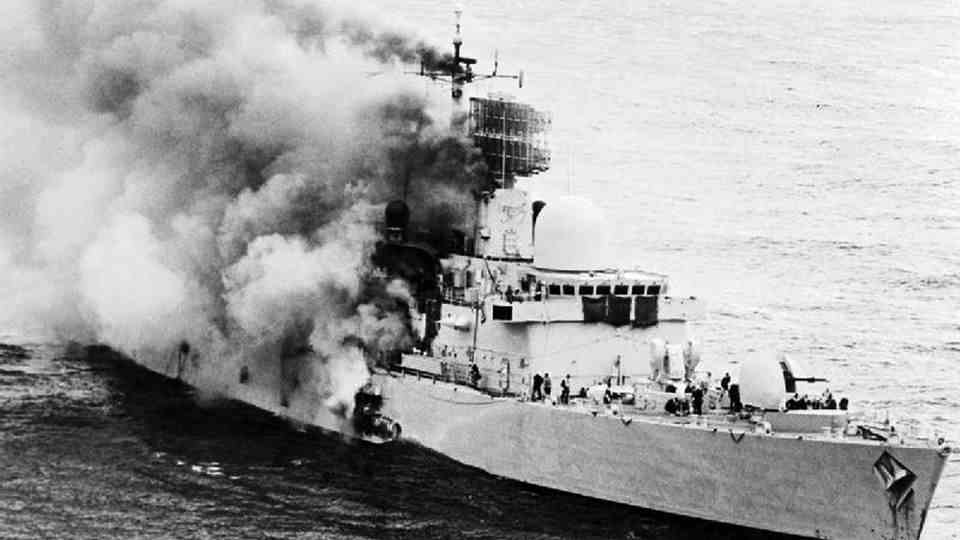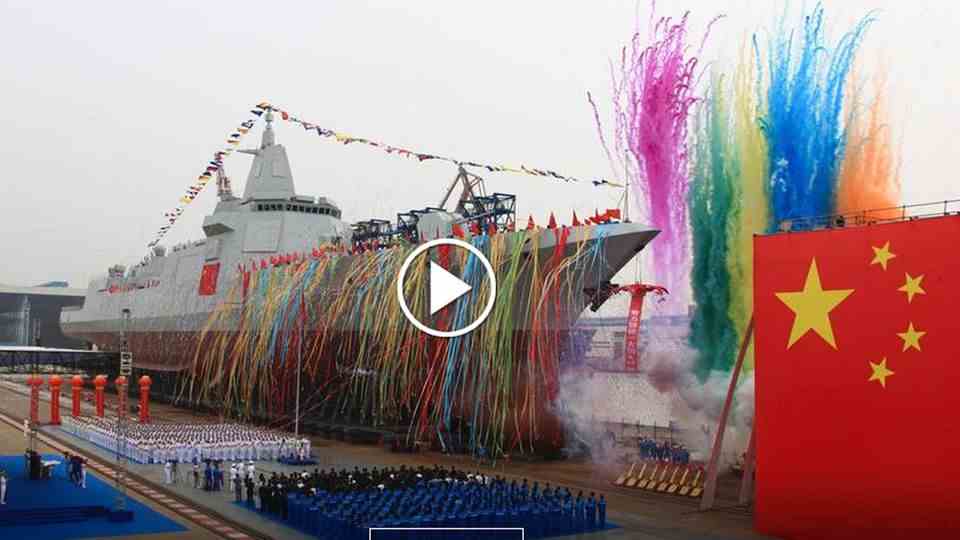battlecruiser
The pride and glory of the old USSR – the sinking of the “Moskva” is more than just a bad omen for Putin
In the “Moskva” the claim to power of the USSR and now of the Putin Empire was shown.
The Black Sea Fleet’s flagship has sunk. The “Moskva” was built in the USSR – with long-range missiles, these weapon-ridden battlecruisers were supposed to destroy the carrier groups of the USA.
The Moskva, the flagship of the Black Sea Fleet, has sunk. It almost doesn’t matter whether the sinking was caused by hits from two Ukrainian anti-ship missiles or whether – according to the Moscow version – the crew’s amateurish handling of ammunition caused a fire that later led to the capsizing.
For Ukraine it is another victory in this “David vs. Goliath” war and for Putin a heavy defeat; the symbolic content almost outweighs the loss of fighting power. In no plane, tank or submarine was the military power of the old USSR shown as clearly as in the mighty battlecruisers of the Slava class, the project 1164. The ship was originally put into service under the name “Slava” in 1982, that’s how it came about the class to its name. The “Slawa” only got the traditional name “Moskva” in 1996.
Battle for the North Atlantic
When it was built in the early 1980s – in an era without advanced electronics – the Slava-class battlecruisers openly challenged the naval power of the USA and NATO. Apart from the aircraft carriers, they were the largest combat ships in the world. In them, the era of the great battleships – the “Bismarck”, the “Yamato”, the “Prince of Wales” or the “Missouri” – seemed to be revived. During World War II, the proud battleships were defeated by the aircraft carriers. The most modern ship of the era, the “Bismarck”, was transformed from old biplanes into an unmaneuverable target. When the “Yamato” was about to face her final battle, she couldn’t fire a single cannon at a ship; like a swarm of angry hornets, she was sunk by carrier aircraft on the march to Okinawa.
The battlecruisers not only raised the naval power of the USSR to a new level. They also marked a point in naval history; they should mean the end of the carriers. A ship like the “Moskva” was designed as a fleet and carrier destroyer. During World War II, battleships could only operate within range of their cannons. This was ridiculously small compared to the range of airplanes. The “Moskva” and her sister ships were to attack convoys and NATO carriers in the Atlantic with long-range missiles. A large ship like a carrier was an easy target to find even with the means of that time.
Missile salvos against US carriers
Instead of gun turrets, the 16 launch tubes for P-1000 rockets shaped the appearance of the ships. They achieved a range of up to 700 kilometers. They were armed with either a 1,000-kilogram conventional warhead or a 350-kiloton nuclear warhead. Both sufficient to sink any ship instantly. The missiles could perform a salvo launch. Eight P-1000s attacked a fleet together. The battlecruisers armed themselves against air attacks with a whole arsenal of anti-aircraft missiles.
The “Slava” class relied on the superiority of long-range missiles over aircraft or even artillery. The 186 meter long battle cruiser never fought a battle against US carriers, and the prospects can only be speculated about. We know from exercises in the West that in reality the “invincibility” of the carriers was not far off. Because again and again submarines managed to break through the anti-barrier protection of the escort ships and take the carrier in the center in their sights. So it’s more likely that the USSR’s attack submarines were far more dangerous. But a submarine cannot symbolize the glamor and glory of a claim to power like this – unlike a battlecruiser bristling with weapons.
“Moskva”: Insufficiently modernized
With the end of the USSR, the ships fell into disrepair. There was a lack of money for maintenance and modernization. But the symbolic importance of the “Moskva” was so great that the city of Moscow paid for the upkeep even in these times of need – scrapping the proud ship would have been too shameful.
Part of the cruiser fleet is now earmarked for comprehensive modernization (“Putin’s battlecruisers are supposed to sink the US carriers with hypersonic missiles”). They are to receive modern radar and anti-aircraft missiles. Above all, they are to be equipped with Russia’s modern hypersonic weapons. The drive of the “Moskva” was modernized in 2019, but it did not have modern armament and radar equipment. In particular, the ship could not monitor the airspace in the full 360-degree circle because its superstructure itself cast a shadow. There was therefore always a blind spot in the direction of the forecastle – fatal in the event of an attack.
Vulnerability of Capital Ships
Assuming the “Moskva” was actually hit by two Neptun rockets, as Kyiv claims, then other sea powers would have no reason to be happy either. It was reported that the anti-aircraft defenses of the Russian ships were distracted by a sham attack by a combat drone and the Neptunes then struck in the shadow of the drone. Such an attack can hit any ship and the chances of a successful defense are always doubtful. Because drones are relatively cheap. The Turkish TB2 does not cost two million euros.
The defense becomes even more difficult if, in addition to real combat drones, unarmed cheap models are also sent out to keep the defense busy with numerous targets. A missile like the Neptun is difficult to defend against. In the final approach, it approaches the target in extremely low flight – so it can hardly be seen on the approach and is also very difficult to shoot down. A salvo of four or eight missiles would always land hits.
It can be considered ironic that the sinking of the “Moskva” confirms the concept of the “Slava” class: capital ships can be eliminated with guided missiles. But it remains questionable whether there is a future for battlecruisers and other giants of the sea. Russia in particular is pursuing the concept of mounting very long-range dangerous guided missiles on very small ships such as corvettes. In the future, rockets and cruise missiles should also be able to be launched from completely normal-looking containers. So any larger fish trawler could be turned into a fleet destroyer. This development not only threatens the carriers of the USA, but ultimately all large combat ships.
Also read:
Putin’s battle cruisers are supposed to sink the US carriers with hypersonic missiles
Scandal in Russia: Commander peddles his destroyer’s bronze screws
Type 055 – This Chinese destroyer wants to strike fear into the world





